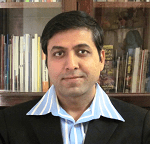This set of Waste Water Engineering Multiple Choice Questions & Answers (MCQs) focuses on “Secondary Settling”.
1. Sewage treatment plant is a part of secondary treatment.
a) True
b) False
View Answer
Explanation: Secondary treatment is a treatment process for wastewater (or sewage) to achieve a certain degree of effluent quality by using a sewage treatment plant with physical phase separation to remove settleable solids and a biological process to remove dissolved and suspended organic compounds.
2. Biological process is used to remove _______
a) Settleable solids
b) Volatile solids
c) Dissolved solids
d) Colloids
View Answer
Explanation: Biological process is used to remove dissolved and suspended organic compounds. Physical phase separation is used to remove settleable solids in the sewage treatment plant.
3. What is the wastewater called as after physical and biological removal of solids?
a) Primary effluent
b) Primary treated water
c) Secondary treated water
d) Secondary treated wastewater
View Answer
Explanation: After this kind of treatment that is after physical removal of solids and biological removal of solids, the wastewater may be called secondary-treated wastewater.
4. What is the monthly concentration of solids produced by secondary sewage effluent?
a) 20 mg/l
b) 30 mg/l
c) 40 mg/l
d) 35 mg/l
View Answer
Explanation: Secondary treated sewage is expected to produce effluent with a monthly average of less than 30 mg/l BOD and less than 30 mg/l suspended solids. Weekly averages may be up to 50 percent higher.
5. What is the expected BOD removal after both primary and secondary treatment?
a) 90%
b) 85%
c) 80%
d) 75%
View Answer
Explanation: A sewage treatment plant providing both primary and secondary treatment is expected to remove at least 85 percent of the BOD and suspended solids from domestic sewage.
6. What is the percentage removal of BOD by stabilization ponds?
a) 20%
b) 45%
c) 65%
d) 95%
View Answer
Explanation: EPA regulations describe stabilization ponds as providing treatment equivalent to secondary treatment removing 65 percent of the BOD and suspended solids from incoming sewage and discharging approximately 50 percent higher effluent concentrations than modern bioreactors.
7. The trickling filter consists of electric systems.
a) True
b) False
View Answer
Explanation: The trickling filters owe a low construction cost. The oxygen delivery is cheap and they consist of non-electric systems. Trickling filters are temperature dependent.
8. Which of these is not an advantage of a trickling filter?
a) Temperature
b) Construction cost
c) Oxygen delivery
d) Electric systems
View Answer
Explanation: The oxygen delivery is cheap and they consist of non-electric systems. Trickling filters owe a low construction cost. Trickling filters are temperature dependent which makes it a disadvantage of a trickling filter.
9. The secondary clarifiers are ________
a) Circular
b) Rectangular
c) Square
d) Triangular
View Answer
Explanation: The secondary clarifiers are another set of circular tanks where the bacteria from the activated sludge tanks are settled out by gravity. Manchester has three clarifiers where the mixed liquor suspended solids (MLSS) is separated from the clean overflow.
Sanfoundry Global Education & Learning Series – Waste Water Engineering.
To practice all areas of Waste Water Engineering, here is complete set of 1000+ Multiple Choice Questions and Answers.
If you find a mistake in question / option / answer, kindly take a screenshot and email to [email protected]
- Check Civil Engineering Books
- Check Waste Water Engineering Books
- Apply for Civil Engineering Internship
- Practice Civil Engineering MCQs
